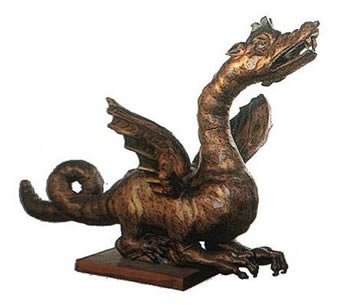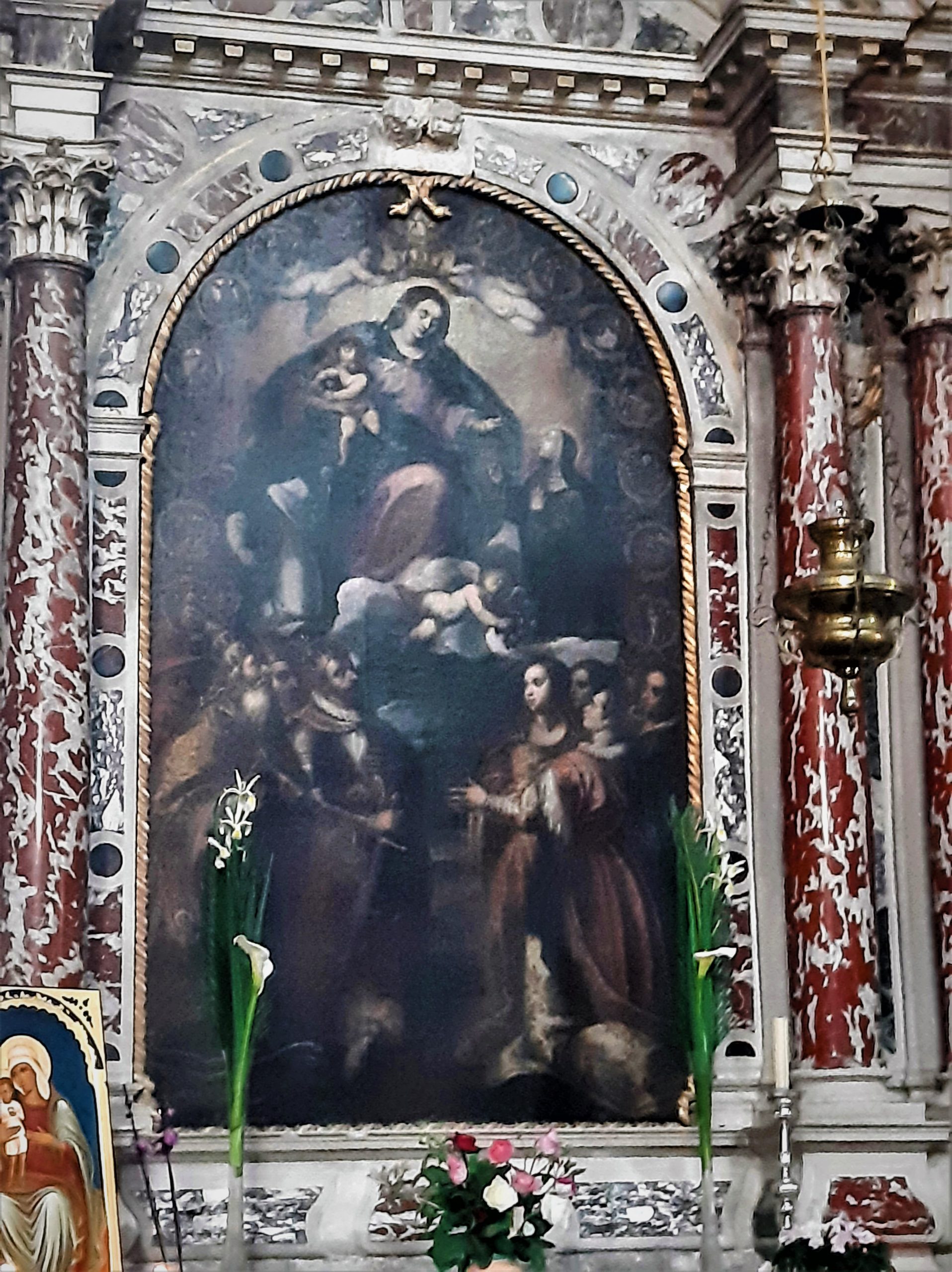VICTORY ON CANVAS

In the church of St. Peter the Martyr in Stari Grad, only a few will notice a distinctive altar painting. I’ve been looking at it for years, noticing that it’s different from others, but I only found out why when I became a guide. The altar painting of Our Lady of the Rosary from 1606 is the work of the Venetian painter Andrea Michieli, affectionately nicknamed Vicentino. Unlike the altar paintings with the usual depictions of saints and biblical motifs, this one also depicts a real event. The event took place 35 years earlier, but it still lingers in the living memory of the residents of Hvar who still commission paintings with the same motif. The victors of the Battle of Lepanto found themselves on the altar paintings by different authors in Vrboska, Jelsa, Dol and here in Stari Grad.
In fact, in August 1571, Uluz Ali’s naval fleet ravaged the island of Hvar. They also invaded the church of St. Peter. Two months after that terrible event, there was an opportunity to settle the score in the Battle of Lepanto. The fleet of the Holy League united the Christian world of Europe against the fleet of the Ottoman Empire. There was a galley from Hvar among the galleys that took part in the battle on our side of the Adriatic Sea. It was named after the patron saint of Dalmatia, St. Jerome. The bow of the ship was adorned with a large petrifying wooden beakhead, while the brave galley sailors were led by the supercomitus Ivan Balčić from Stari Grad. God’s justice was on the side of the injured and it led them to their first glorious victory. The victory was twofold, all the more so because the islanders managed to rebuild everything that was once destroyed by human hatred. The members of the Holy League had an invisible and invincible “ace up their sleeve”, Our Lady of the Rosary. They believed that she was by their side. Because of this, the Litanies of Loreto included a new invocation: “Helper of Christians, pray for us”.
In the painting, everything is balanced, ecclesiastic and secular. In the pyramidal composition, the dominating central figure of Our Lady of the Rosary is in the company of St. Dominic and St. Catherine of Siena, with “unholy” men and women underneath. It was these “intruders” that caught my eye. They are divided into two groups by gender and lined up vertically next to each other. On the right, there are female rulers, while on the left there are influential male characters in ceremonial attire with crowns on their heads. These are the allies of the Holy League: the King of Spain, the Pope of Rome and the Doge of Venice. Cardinal Carlo Borromeo can be seen in the background with a red skullcap. They celebrate their first victory in the Battle of Lepanto, which took place within the larger Venetian-Ottoman war. The main protagonists of this painting marked a turning point after which nothing would ever be the same. There was one Hvar before and another Hvar after 1571.
The painting of the celebration of the Battle of Lepanto is located in one of the northern chapels of the church and is in the shade throughout most of the day. At certain times of the day, the sunrays dance the game of shadow and light on that dark podium. Sometimes they shower it in gold, sometimes the dark tones reveal the patina of the time in which it was created. In the small side chapel of the church of St. Peter, Our Lady is celebrated on canvas together with the victory which is important for the entire Dalmatia. The brush of the elderly Vicentino divided time into the period before and after 1571, thus levelling the scale of the universe.













